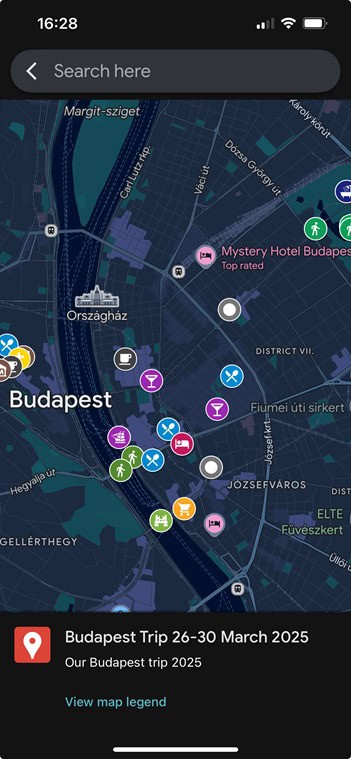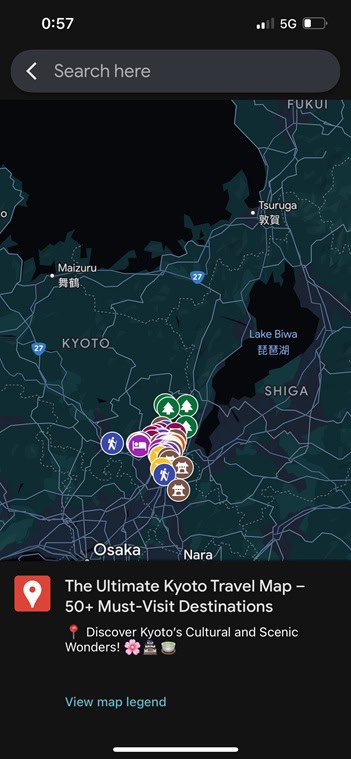Introduction – Where Old Souls and Young Spirits Mingle
Budapest isn’t just beautiful—it breathes culture through every cobblestone, café, and courtyard. This city is where imperial grandeur meets artistic rebellion. A place where thermal waters hold centuries of stories, and ruin pubs echo with laughter inside what used to be crumbling walls.
If you’re a cultural explorer, a curious couple, or a solo traveler with an eye for authenticity, Budapest is your playground. But beyond its famous landmarks lies a richer layer of experiences—ones that dig deeper into the Hungarian soul.
This guide unveils seven of the most compelling cultural encounters in Budapest. They’re not just things to do—they’re moments to feel.
TL;DR (Too Long; Didn’t Read)
Budapest is a cultural treasure where ancient traditions meet modern creativity. This guide highlights seven enriching experiences — from thermal baths and folk shows to ruin pubs and Jewish heritage walks. Whether you’re into history, food, or hidden stories, you’ll find something meaningful here. Perfect for solo travelers, couples, or cultural explorers who want more than just sightseeing.
Get Your FREE London Travel Map + 5 Must-Have Travel Resources!
Plan smarter, stress less, and make every trip unforgettable with these exclusive tools—100% FREE!
📩 Sign up now & download instantly!

1. Soak in Tradition at a Thermal Bathhouse
Why It’s More Than Just a Soak
Hungarians don’t just bathe—they ritualize it. With natural thermal springs flowing beneath the city, bathhouses have been part of daily life since Roman times, later perfected during the Ottoman era. Today, Budapest has rightfully earned its title as the “City of Spas.” But these baths are more than steamy pools—they’re where history, healing, and Hungarian hospitality converge.
Locals treat visits as social and spiritual therapy. You’ll see retirees chatting in warm waters, students unwinding after class, and tourists discovering the centuries-old art of relaxation.
Where to Experience It
- Széchenyi Baths: The most iconic and sprawling, located in City Park. It’s a favorite for travelers and a social hub for locals.
- Rudas Baths: Offers a unique Ottoman dome, stunning panoramic rooftop pool, and even night bathing on weekends.
- Lukács Baths: Less touristy and more authentic—beloved by locals for its medical waters and tranquil atmosphere.
Tips for Visiting
- Bring flip-flops, swimwear, and a towel (rentals available but not ideal).
- Go early to avoid crowds and enjoy a quieter ambiance.
- Try alternating between hot and cold pools—an energizing local trick!
2. Witness Hungary’s Soul in a Live Folk Performance
A Living Archive of Tradition
Hungarian folk culture is not locked away in a museum—it dances, sings, and strums its way into your heart. Rooted in ancient storytelling, Hungarian folk music and dance are emotional, intricate, and deeply expressive. Recognized by UNESCO, these traditions preserve tales of love, hardship, nature, and resilience.
Folk performances are an unfiltered glimpse into Hungary’s rural past—and its proud, enduring spirit.
Where to Go
- Hungarian Heritage House: Hosts premier performances in a stunning setting.
- Danube Palace: Offers more intimate shows with stellar acoustics and live orchestras.
- Local taverns and dinner shows: Blending folk culture with culinary treats for a rich, multisensory evening.
Traveler Tip
For a more immersive night, opt for a folk show that includes a traditional dinner and wine tasting. It’s a cozy, soulful way to absorb the culture.
3. Eat Like a Local – Budapest’s Culinary Identity
Not Just Goulash: Flavors to Try
Hungarian cuisine is bold, hearty, and flavorful—with paprika at its heart. While goulash is world-famous, dishes like lángos (fried flatbread), paprikás csirke (paprika chicken), and kürtőskalács (chimney cake) are essential bites of the local experience.
And don’t miss Hungary’s robust wine culture. From the sweet Tokaji to dry reds from Villány, Budapest offers fantastic pours in both fine-dining and street-food settings.
Cultural Spots to Eat
- Café Gerbeaud: A Belle Époque café that once served royalty and writers. Order the Dobos Torte!
- Great Market Hall: A sensory overload of Hungarian specialties. The upper floor is perfect for grabbing lángos and people-watching.
- Mazel Tov & Gettó Gulyás: Modern eateries that reinterpret Hungarian dishes in trendy spaces.
Local Travel Hack
Want to eat like a local and spend like one? The Wise card makes foreign transactions smoother and cheaper—ideal for markets, cafés, and casual spots that may not love your home bank’s fees.
4. Ruin Pubs: Budapest’s Bohemian Time Capsules
From Decay to Decadence
The story of Budapest’s ruin pubs is one of resilience and creativity. In the early 2000s, local visionaries began repurposing abandoned buildings in the Jewish Quarter—transforming them into eclectic hangouts filled with mismatched furniture, vintage décor, and underground art. These spaces became cultural beacons, celebrating freedom of expression in post-communist Hungary.
Today, ruin pubs are more than bars—they’re living art installations.
Must-Visit Pubs with a Story
- Szimpla Kert: The pioneer and icon. Think of it as a time capsule, art gallery, and party zone rolled into one.
- Instant-Fogas: A complex of rooms and dance floors with surreal design and free-spirited energy.
- Csendes: A quieter option with antique décor and café vibes by day, cocktails by night.
Cultural Insight
Many ruin pubs host flea markets, open-mic nights, short film screenings, and even charity events. They’re snapshots of Budapest’s evolving urban culture—equal parts nostalgic and forward-thinking.
Need More Help Planning Your Trip?
5. Learn Through Taste and Talk in a Cooking Class
Why It’s More Than Just a Recipe
There’s something intimate about learning to cook a local dish from someone’s grandma or lifelong chef. In Budapest, cooking classes are not just lessons—they’re stories, shared memories, and heritage passed through spice and spoon.
These experiences foster connections between visitors and locals while offering hands-on insight into the cultural role of food in Hungarian homes.
What You Can Learn to Make
- Rich and fragrant goulash, of course.
- Flaky rétes (strudel), sweet or savory.
- Seasonal soups like Jókai bableves (bean soup with smoked meat).
Where to Find These Classes
- Boutique experiences with local families (often booked via cultural centers or Airbnb).
- Professional cooking schools offering full-course lessons with market tours.
- Vegan and modern fusion options are growing in popularity, too.
🍲 Craving a Culture-Filled Budapest Itinerary?
Whether you’re planning to savor goulash in a local kitchen or soak in the city’s iconic bathhouses, our free AI-powered itinerary builder creates a personalized day-by-day plan tailored to your pace, interests, and travel style.
✨ Less stress, more culture — start your unforgettable Budapest journey now:
6. Discover the Jewish Quarter’s Cultural Mosaic
A Story of Survival, Art, and Fusion
The Jewish Quarter in Budapest’s District VII is a powerful tapestry of resilience. Once part of the city’s WWII-era ghetto, today it pulses with creativity, remembrance, and regeneration. History, faith, street art, and global cuisine coexist in this walkable neighborhood that feels alive with stories.
The cultural impact of Hungary’s Jewish community is felt in its synagogues, music, literature, and kitchens—each offering a window into a complex, enduring heritage.
Highlights to Explore
- Dohány Street Synagogue: Europe’s largest synagogue and a must-visit. Its museum and memorial garden offer a deeply moving experience.
- Jewish Museum: Located within the synagogue complex, it tells the story of Hungary’s Jewish history through personal artifacts and art.
- Gozsdu Courtyard: Day or night, this lively alley is filled with cafés, craft stalls, and nightlife tucked behind historic façades.
- Street Art: Don’t miss the murals commemorating Raoul Wallenberg or local Jewish heroes—history told in paint.
Traveler Advice
Walking tours are a great way to dive deeper into the Quarter’s layered past. Opt for cultural tours (not just food or bar crawls) if you want real context. Some include access to hidden courtyards and survivor stories you won’t find in guidebooks.
Discover Our Ultimate Collection of Travel Maps
7. Cruise the Danube at Sunset with Stories of the Past
Where History Glows on the Water
As the sun dips behind Buda’s hills and golden reflections dance on the Danube, few experiences compare to cruising along the river that splits—and defines—the city. A Danube river cruise is not just romantic; it’s a visual journey through Hungary’s history, told in architecture and light.
From medieval castles to 19th-century Parliament and the poignant Shoes on the Danube memorial, each sight along the shore whispers tales of glory, tragedy, and resilience.
Why This Is a Cultural Experience
- Architecture as a historical timeline: Gothic, Renaissance, Neo-Classical—each building reflects a chapter in Hungary’s story.
- Bridges with symbolism: The Chain Bridge, Margaret Bridge, and Liberty Bridge represent engineering, loss, and rebirth.
- Narrated cruises offer stories of monarchs, revolutions, and daily life that you won’t glean from a city bus.
How to Make It Special
- Choose evening or night cruises for illuminated views and a moodier, more cinematic experience.
- Some cruises include live classical music or folklore-inspired soundtracks.
- Sit on the left side when heading north for best views of Parliament and Margaret Island.
🎟️ Ready to dive into Budapest’s cultural side?
Whether you’re dreaming of a Danube sunset cruise, craving a hands-on cooking class, or curious about Jewish heritage walking tours — many of these experiences can be reserved in advance through trusted platforms like GetYourGuide or Viator.
Booking ahead helps skip lines, secure your spot, and explore with local guides who bring the city’s stories to life. If availability is limited, be sure to also check the official site of the attraction or provider for real-time schedules.
Memorable Mentions 🌟
Not everything fits neatly into a numbered list—but these cultural gems are too good to skip:
- House of Terror Museum: A chilling but important visit for those interested in Hungary’s 20th-century struggles with fascism and communism.
- Memento Park: An open-air museum filled with gigantic Communist-era statues, now recontextualized with irony and insight.
- Károlyi Garden: A serene green space once frequented by poets and aristocrats, tucked near the National Museum.
- Budapest100: A spring weekend when locals open the doors of historic residential buildings—perfect for architecture buffs and cultural nosy-parks alike.

Test Your Travel Smarts with Our Quizzes!
Think you know your way around the world? From cultural traditions to hidden gems, our short and playful travel quizzes are the perfect way to challenge yourself, learn something new, and maybe even spark your next adventure. Great for anyone who loves a bit of travel trivia fun!
Conclusion – Culture is the Heartbeat of Budapest
From its steamy bathhouses to its soulful dances, its ruin pub whispers to its synagogue choirs—Budapest is a city best explored with your senses wide open.
Culture here isn’t tucked behind glass. It’s steaming in your soup, singing on a violin string, floating on the Danube breeze. It invites you to feel, not just see.
Whether you’re wandering solo, exploring as a couple, or nurturing curious kids, Budapest will find a way to speak to you.
💬 Have you had a soul-stirring cultural moment in Budapest? We’d love to hear your story in the comments—or tell us which of these you’re adding to your must-do list!
Your Ultimate Travel Companion
Frequently Asked Questions About Cultural Experiences in Budapest
Q: What is the best time of year to enjoy cultural activities in Budapest?
A: Spring (April to June) and autumn (September to early November) are ideal for cultural travel in Budapest. These seasons offer mild weather, fewer crowds, and popular festivals like Budapest100 and the Autumn Festival of the Arts. Summer is vibrant but can be hot and crowded, while winter offers cozy charm with fewer tourists and seasonal folk performances.
Q: Are Budapest’s cultural experiences family-friendly?
A: Yes, many are! Thermal baths like Széchenyi have family areas, and cooking classes can be tailored for kids. Folk performances are colorful and engaging, and even ruin pubs during the day are relaxed and often feature daytime markets or pop-up galleries suitable for families.
Q: How much should I budget for cultural experiences in Budapest?
A: Budapest is relatively affordable for Europe. Entry to thermal baths ranges from €12–25. Folk show tickets cost around €20–40. Cooking classes and Danube cruises vary based on the experience level, starting at around €50. Dining and market experiences can be done on any budget.
Q: Is it better to pre-book cultural activities or buy tickets on the spot?
A: For popular experiences like Danube cruises, cooking classes, and folk performances, it’s wise to book in advance, especially in peak season. Platforms like Viator and GetYourGuide make this easy and often include flexible cancellation options.
Q: Can I visit Budapest’s thermal baths without speaking Hungarian?
A: Absolutely. Major bathhouses like Széchenyi and Rudas have English-speaking staff and multilingual signage. It’s a good idea to research bathing etiquette beforehand, but you’ll have no trouble navigating as a non-Hungarian speaker.
Q: Is it safe to use foreign credit or debit cards in Budapest’s markets and cultural sites?
A: Most places accept cards, but small vendors may prefer cash. Using a service like Wise for currency conversion helps avoid high international fees and gives you better exchange rates than airport kiosks or banks.
Q: What’s the best way to explore Budapest’s Jewish Quarter?
A: You can explore on your own, but joining a guided walking tour adds rich historical and cultural context. Some tours include access to private courtyards or interviews with locals. It’s also one of the best areas for food and art, so allow extra time to explore.
Q: Are ruin pubs appropriate for daytime visits or travelers who don’t drink?
A: Yes. Many ruin pubs like Szimpla Kert open early and serve coffee, snacks, or host art markets during the day. They’re fascinating cultural spaces worth visiting even if you skip the nightlife.
📌 Love cultural travel? Explore more ideas on Pinterest →












